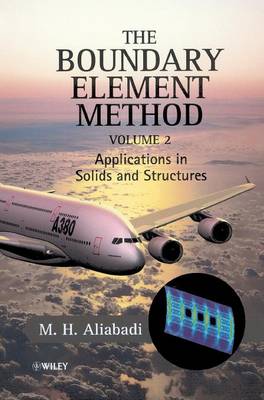The boundary element method (BEM) is a modern numerical technique, which has enjoyed increasing popularity over the last two decades, and is now an established alternative to traditional computational methods of engineering analysis. The main advantage of the BEM is its unique ability to provide a complete solution in terms of boundary values only, with substantial savings in modelling effort. This two-volume book set is designed to provide the readers with a comprehensive and up-to-date account of the boundary element method and its application to solving engineering problems. Each volume is a self-contained book including a substantial amount of material not previously covered by other text books on the subject. Volume 1 covers applications to heat transfer, acoustics, electrochemistry and fluid mechanics problems, while volume 2 concentrates on solids and structures, describing applications to elasticity, plasticity, elastodynamics, fracture mechanics and contact analysis. The early chapters are designed as a teaching text for final year undergraduate courses.
Both volumes reflect the experience of the authors over a period of more than twenty years of boundary element research. This volume, Applications in Solids and Structures, provides a comprehensive presentation of the BEM from fundamentals to advanced engineering applications and encompasses: Elasticity for 2D, 3D and Plates and Shells Non-linear, Transient and Thermal Stress Analysis Crack Growth and Multi-body Contact Mechanics Sensitivity Analysis and Optimisation Analysis of Assembled Structures. An important feature of this book is the in-depth presentation of BEM formulations in all the above fields, including detailed discussions of the basic theory, numerical algorithms and where possible simple examples are included, as well as test results for practical engineering applications of the method. Although most of the methods presented are the latest developments in the field, the author has included some simple techniques, which are helpful in understanding the computer implementation of BEM. Another notable feature is the comprehensive presentation of a new generation of boundary elements known as the Dual Boundary Element Method.
Written by an internationally recognised authority in the field, this is essential reading for postgraduates, researchers and practitioners in Aerospace, Mechanical and Civil Engineering and Applied Mathematics.
- ISBN10 0470842989
- ISBN13 9780470842980
- Publish Date 28 March 2002
- Publish Status Active
- Publish Country US
- Imprint John Wiley & Sons Inc
- Format Hardcover
- Pages 598
- Language English
